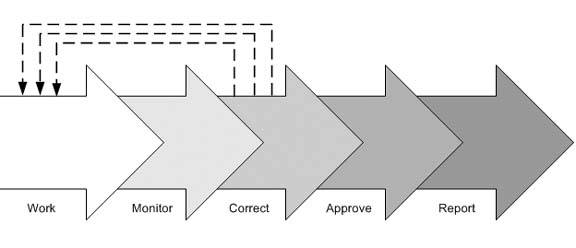Section 10.1. Introduction
10.1. IntroductionIf you've followed all the steps leading up to this chapter, congratulations! Your IT project should be sitting on very solid ground. Your planning activities will help everyone stay focused during the project work phase and will help make sure the scope, time, cost, and quality requirements are met. In this chapter, we're going to discuss strategies for managing your IT project. We'll talk about getting the project started and how to monitor and control project progress. We will cover more detailed, technical tracking techniques separately in Chapter 11 along with common project problems and solutions. Where appropriate, we'll mention some of the detailed tracking techniques in this chapter and refer you to Chapter 11 for more detail. Managing your IT project is much easier when you have a clear vision of the project, developed from your efforts at defining, organizing, and planning your project. In this chapter, we'll look at how to supervise the project elements, including monitoring project progress, managing change and risk, and managing your project team. As with previous chapters, we'll begin by taking a look at where we are in the process, shown in Figure 10.1 It is clear that up until now, no actual project work has been done (yes, planning is work, but not the actual work of the project). Though there are a lot of planning activities, they all contribute to your ability to manage your project during this implementation and work phase. As your project moves forward, you'll begin to recognize and reap the rewards of your planning efforts. Figure 10-1. IT Project Management Process Overview We've already defined most of the project management terminology that we'll be using, but a few new terms will be introduced in this chapter including:
The input to this stage of the project is your final, approved project plan and the outcome of this stage is the completed project. The actions within this stage are shown in Figure 10.2 Figure 10-2. Inputs, Actions, and Outputs for Project Management Step
The project management or implementation phase of our process includes reviewing the plan, starting project work, and managing, monitoring, and measuring project work, as shown in Figure 10.3 If any work varies from the plan, corrective action must be taken and work (new work due to correction or repair of earlier work) must be undertaken. The final project work includes delivering the project results to the end user or customer for approval and acceptance. Once project deliverables are accepted, responsibility is typically transferred to the user/customer or to another group responsible for installation or deployment, beta testing, or operations. Periodic reporting occurs during the Work, Monitor, and Correct steps shown in Figure 10.3, but final reporting is also required. Reporting includes status and progress reports from your team to you as well as progress reports from you to your project sponsor, user/client representative(s), executive team, and/or company. The diagram shown in Figure 10.3 can represent the entire implementation (work) cycle of a project or the implementation of one phase of a project. These steps are iterative and continue until all project work is completed, approved, and accepted. We'll discuss these elements in this chapter. Figure 10-3. Implementation phase overview |
EAN: 2147483647
Pages: 166
- Enterprise Application Integration: New Solutions for a Solved Problem or a Challenging Research Field?
- The Effects of an Enterprise Resource Planning System (ERP) Implementation on Job Characteristics – A Study using the Hackman and Oldham Job Characteristics Model
- Context Management of ERP Processes in Virtual Communities
- Intrinsic and Contextual Data Quality: The Effect of Media and Personal Involvement
- A Hybrid Clustering Technique to Improve Patient Data Quality